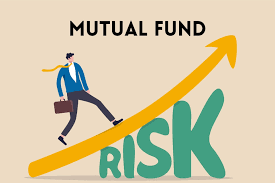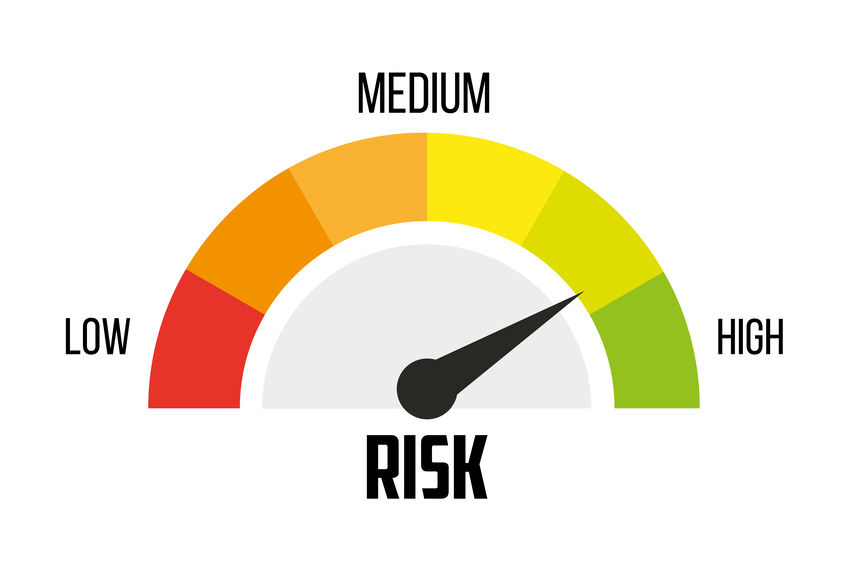Introduction
Mutual Funds are a great investment option for both beginners and experienced investors. It pools money from different investors and invests in various asset classes after thorough research. They provide inflation-beating returns. Hence, they are preferable to direct investment in stock markets. However, mutual funds are subject to various types of risks. Usually, the fund houses spread awareness among people regarding the risks involved in mutual funds and how they are a successful investment option. Therefore, understanding the types of risks associated with mutual funds is essential before investing.
All investments carry some risk. Moreover, they differ from one investment to another. Hence, understating different types of risks is crucial. Mutual Funds invest in various asset classes- equity, debt, etc. All these assets behave differently and have distinct risk profiles. Hence, the fund managers need to understand the risk profiles of the asset classes to manage the risk and returns associated with the investors’ portfolio.
Low-risk- or risk-free mutual funds invest in government bonds. They provide low returns compared to other investment options but carry low risks and either match or stay ahead of economic inflation. Further, moderate-risk mutual funds invest in hybrid funds, arbitrage funds, etc., for one to three years. Lastly, high-risk-return mutual funds invest in equity shares of companies for a long term, five years or more.

Types of Risks in Mutual Funds
There are various types of risks in mutual funds. Let’s understand each one in detail:
Market Risk
We all would have heard that mutual funds are subject to market risks. It is also known as systematic risk. Poor market performance can affect mutual fund investments. It is a risk that leads to losses because of a bear run in the market. Various factors influence the market performance, for instance- inflation, recession, pandemic, changes in government policies, fluctuating interest rates, natural disasters, etc. No one can predict the future. Hence, diversification is not beneficial in such situations. The only thing an investor can do in such a scenario is wait for things to get better. Hence, market risk is one of the most vital risks one must keep in mind before investing. For instance, the COVID-19 pandemic severely impacted the stock markets, leading to a significant crash in global markets.
Volatility Risk
Equity-based mutual funds invest in shares of companies listed on stock exchanges. Hence, the value of the fund depends on the company’s performance. A company’s performance gets affected due to various reasons such as changing consumer preferences, poor financials, changing government policies, inefficient management teams, etc. The factors affect the company’s stock performance due to which there is upward or downward movement in the share price leading to volatility risks in mutual funds.
Liquidity Risk
They arise when one holds mutual fund investments for the long term and has rigid lock-in periods. Liquidity means how easily can a person turn their holdings into cash or cash equivalents. In such a case, redemption becomes difficult without incurring losses. Moreover, one also faces such risk when sellers cannot find buyers to sell their holdings in the market. Ultimately, the fund houses cannot sell securities held in the portfolio, leading to losses to the scheme. However, liquidity risks are avoidable with the help of diversification. For instance, ELSS has a lock-in period of three years, due to which liquidity risks arise. Even ETFs (Exchange Traded Funds) experience liquidity risks as it often becomes difficult to find buyers or sellers interested in trading. Hence, the trade volumes are also low, leading to difficulty during exit.
Credit Risk
Credit or Default risk arises when mutual funds invest in debt instruments such as bonds, etc. When the fixed income securities’ issuer defaults in paying the principal or interest due to which the fund house does not receive the due amount, increasing the chances of credit risks. Ultimately, the NAV of the scheme falls to the extent of default. Moreover, even if there are no defaults, price fluctuations affect the security’s credit rating. Additionally, government securities face low credit risks than corporate bonds. The credit risk of a bond depends on the credit ratings. Hence, high-rated bonds are safer than low-rated bonds as there are low chances of default showing the ability of the issuer to pay the due amount.
Concentration Risk
Concentration risk arises when investors invest their money in one scheme or sector. Such risks are prone to losses as a considerable amount gets invested in one scheme or sector. Diversification helps to minimize risks during the downfall. For instance, if one’s portfolio has exposure to an equity scheme, it leads to high risks. It is because the investor will lose money during volatility. Hence, one must diversify funds into other asset classes such as debt, hybrid, etc.
Inflation Risk
Inflation reduces the purchasing power of an individual. It is because of the gradual rise in price levels of various goods and services. If the fund manager does not consider the inflation rate in the investment plan, the investors won’t earn returns to achieve their financial goals. The managers plan investments in such a manner that it helps to maximize returns and minimize risks. They must ensure that investors’ investments provide inflation-beating returns. Ideal cash leads to a loss of its value. Hence, investments are essential in such a way that they provide returns more than the current interest rate. For instance, if the inflation rate is 7% and the returns from a mutual fund scheme are 10%, the effective rate of return is 3%.
Interest Rate Risk
RBI revises the interest rates on a time-to-time basis, eventually affecting the security prices. Interest rates and bond prices are inversely related- when interest rates increase, bond prices fall, and vice-versa. Hence, it affects the portfolio value as it might depreciate or appreciate depending on the interest rate movements. Moreover, the price fluctuations also rely on the yield to maturity and coupon rates.
Others
- Firstly, currency risks arise due to changes in exchange rates, which eventually impact the portfolio returns. For example, currency depreciation leads to lower investment returns.
- Secondly, regular reinvestments and frequent rebalancing of mutual fund investments limit growth possibilities and increase costs associated with management.
- Further, mutual funds carry management risks. The fund managers might not provide effective returns due to inexperience or lack of knowledge. To eliminate such risk, one must invest in passive funds like Index funds.
- Lastly, laws and regulations affect the working of a sector or industry and investment value. For instance, the PLI scheme for electric vehicle production might impact the petroleum industry.




